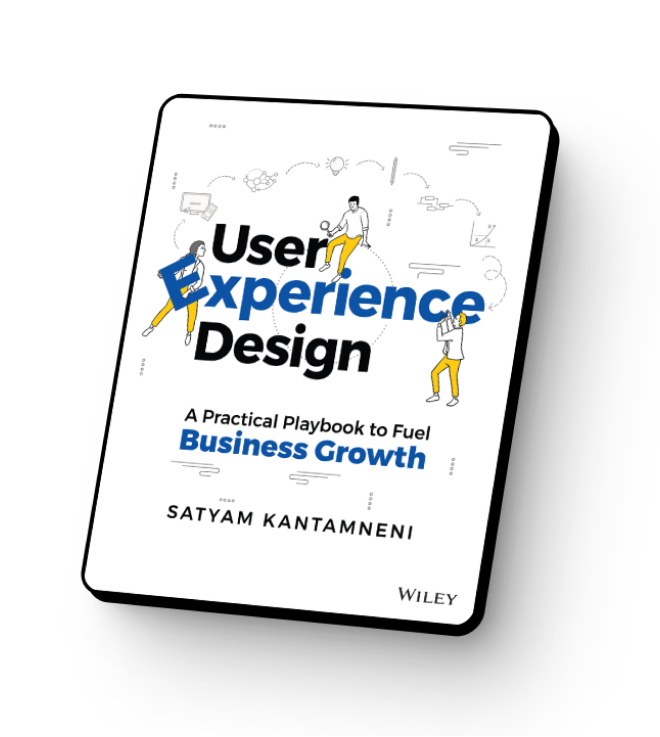It’s 2022, you’re steering the initiatives of an enterprise technology organization and all you hear about is “UX” and “consumer-grade” products. But you suspect your product is not a good example of these principles.
In fact, it’s definitely not. The product is a relic of the 1990s and each feature has become a new tab. New product acquisitions each look and function differently than the core product. And it’s leading to problems like:
- Enough users find it difficult to use or understand the value of your product(s)
- Staff at your organization are not empowered to make decisions based on user and business needs; teams are working based on disparate priorities
- Speed of delivery is prioritized over better user experience
You’ve tried hiring freelance designers but they alone haven’t been able to move the needle on deep-seated user experience issues.
Why? Your domain (maybe network management, cybersecurity, healthcare….) isn’t the easiest to understand – it’s highly technical, your products have legacy features and a multitude of license types, you need to cater to multiple types of users, and of course, be compliant with regulations!
As a result, these are the problems you may be facing:
- Problem 1: The product is complex and no one knows how to engage with it effectively
- Problem 2: The product is developed thinking of engineering and features first
- Problem 3: There is too much “Experience Debt” – an accumulation of unresolved user experience problems
The bad news is if you have been ignoring these product problems, it will ultimately lead to designs that drive low or even negative value for the user; in other words, design failure.
The good news is we specialize in tackling big, messy enterprise product problems and are here to offer you some hope. Let’s take a deeper look:
Big, Messy Problem #1: The product is complex
Your product is clunky, hard to navigate and no one knows how to engage with it effectively. It may have succumbed to the Frankenstein Effect – defined in this context as disparate features added on like patchwork over the years without a unifying raison d’etre and user experience.
When dealing with enterprise technology, we’ve often seen the technology come first, and the user experience last, if at all. And understandably so. These products are technically complex and are used by niche customers; they are not under scrutiny by the general population.
Here are a few problems you may have noticed in your enterprise product:
- The product is a complex mishmash – An accumulation of different features tacked on make it hard for the user to understand the full value of the product and how to get the most out of it
- There is no clear starting point or workflow – Similar to the above, it is not clear where a user should start in order to start getting value out of the product
- There are broken workflows – Overall workflows are not intuitive and lead to dead ends, requiring workarounds from the user
- There is information overload – There is so much data on any given screen that what is important to a user may get lost in the mix, overwhelming the user and adding to their cognitive load
- Data is not actionable – Again, there is so much data on any given screen, yet it’s not clear what the user should do with it
Despite the types of problems mentioned above, there is a way to work through them and avoid design failure.
Solution: Break down complexity through a systemic design process and ensure the right skills are involved.
We see these types of problems in complex domains like cybersecurity, telecommunications, and healthcare all the time. How do we approach them? Our Design Doing Process helps break down complexity in any domain through our proprietary techniques in ecosystem mapping, “experience mapping” and validating assumptions with user and business insights.
After taking the time to understand key concepts, terms, users, and objects in a domain, we take high-level experience Design Problems (DPs), such as “How might we simplify the entire existing product experience?” and break them down into more manageable and discrete problems to design for, such as “How might we reduce the time for setup?” and “How might we differentiate between primary and secondary actions?” We organize our thinking around the ultimate goals we want to help a user achieve, not around features; this gives us laser-like clarity on what is most important and helps us focus on what technicalities we should dive further into.
We dedicate a Design Unit (or more) to our partner’s problems. Each design unit embodies the right skill sets to think through complex design problems and deliver the needed artifacts. These skill sets are: research, design strategy, interaction design, visual design, and prototyping. These teams are equipped with the attitude of thinking about a user before thinking about design, thinking through systems comprehensively, experimenting to achieve results, and a focus on outcomes to deliver, not just artifacts. Further, our team members come from various backgrounds – from architecture to communication to bioengineering – enabling us to look at a problem from multiple perspectives.
This is how we help organizations ship with higher confidence. The time we invest upfront in learning about a system and users pays dividends beyond the short-term rush of turning around a preliminary dashboard design in the first week.
Big, Messy Problem #2: The product is developed thinking of engineering and features first
Often, technically complex products are developed by firms that are engineering-driven. Again, understandably so. It is this technical expertise that is so valuable for users. However, if the usability of a product ultimately frustrates a user at the end of the day, it’s time to rethink, especially as new players with a higher focus on user experience constantly emerge in the market.
In engineering-driven environments where no one knows what the user really wants, we’ve frequently seen meetings go in circles. So teams go with what they know. Rather than looking to the needs of actual users, they wind up with lists of feature requests, engineering capabilities, and feedback from technical in-house Subject Matter Experts (SMEs). The end result is a new feature – often as a new tab – built on assumptions that add even further complexity to a product. This means that in the future, additional resources may have to be spent on training customers and troubleshooting usability issues for them.
Solution: Think of the user first, experience second, and design third.
How can you start shifting this trend in your organization? A successful philosophy when designing is: user first, experience second, design third. This means being user-centric: empathizing with the user first, understanding their needs, pain points, and aspirations – before thinking about what experiences would be most valuable for them to have. Then and only then should you start thinking about design solutions. We simply do not design until we have user insights in hand.
We drive a culture of user empathy in the organizations we work with by:
- Thinking of the user first,
- Making user research insights visible to several cross-functional teams, and
- Helping teams prioritize their work based on research findings.
We make a point to propagate user research insights to the wider organization so individuals on different teams, including engineering, are empowered to make decisions in the user’s best interest.
Being user-centered is like being prepared: it mitigates the risk of building the wrong feature or even worse, solving the wrong problem. Ultimately, it reduces the risk of losing customers and money on ineffective activities.
Big, Messy Problem #3: There is a high accumulation of unresolved user experience problems
Everyone knows it: what often ships is what is often considered “good enough”. Shipping what users want is often sacrificed for shipping on time.
The research that should have happened, or that design variation that could add levels of delight to the user experience, often gets shelved for “one day”. We call this “Experience Debt” – an accumulation of unresolved user experience problems. While some level of Experience Debt is normal, an unruly accumulation can hurt your business. You can lose customers to newer and leaner competitors who have the flexibility and advantage to start with a user-centered mindset and clean slate without Experience Debt. Even long-time customers can have their loyalty shaken with exposure to another, better experience.
Hiring a designer or designers to continually “put lipstick on the pig”, meaning, deal with surface, User Interface (UI)-level issues instead of deeper experience issues will lead to design failure. While it may allow a product to ship in the short term, it may not hit the mark with users.
Finally, trying to resolve user experience issues after release is simply more expensive. This sentiment has been noted as early as the 1990s, by research done by Clare-Marie Karat at the IBM T.J. Watson Research Center, who describes the savings to cost ratio in the context of a large development project as 100:1.
In other words, $1 invested in user experience in the design phase can save $100 in fixing issues after release.
Solution: Govern how user experience evolves and how it is (or isn’t) solving design problems.
How can an organization prevent or start solving Experience Debt? The answer is governance in a variety of ways:
- Govern the evolution of user experience; do not simply launch and forget. For example, we’ve helped organizations define “experience metrics” which they’ve used to baseline the effectiveness of a current experience and see how future releases compare. The habit of tracking user experience immediately puts it at the forefront of the design process.
- Govern that your organization has a practice of gathering insights; anchoring to these insights will help manage the temptation to compromise on user experience outcomes for the sake of delivery. Ensure insights are gathered from user research, business analytics, marketing, sales, etc., and identify any problems they are pointing to. Make certain that these are propagated to the wider organization so everyone feels invested in solving these user and business problems. Having a shared understanding of what the issues are, and a mindset to solve these problems first, will help reduce jumping to shortcuts.
- Govern that the design is solving problems and not simply employing the latest UI trends. Ensure your design leads are tracking which problems are being solved, and how. If time is going to be spent designing an experience, have your team do it the right way based on user and business insights.
The resources invested in baselining, tracking, and communicating will reduce an organization’s Experience Debt and ultimately save time and money down the road.
What kind of investment is required to see results?
With a few of the right investments in resources (i.e. research) and shifts in mindsets, your organization can start tackling these big, messy problems. You don’t need an entire organizational overhaul to start. Below are ideas for lean investments you can make to avoid design failure, and heftier ones too.
Invest in UX, not UI. You need practitioners who work with a design process that diverges into discovering the right problems to solve and can ideate with depth, before converging on design solutions.
- Lean investment: Work with a designer who demonstrates strong processes and rationale for design decisions that are anchored to user and business needs, and not only strength in UI design.
- Heavier investment: Hire a design team with a variety of skill sets (research, design strategy, interaction design, visual design, and prototyping) that can handle this and iterate at scale.
Build a culture of user empathy. Ensure key decision-makers and practitioners understand the user and are championing for their success.
- Lean investment: Ensure at least some form of user research is happening and that those research insights are widely communicated so, at minimum, there is some common understanding of the user. Share out any user testimonials.
- Heavier investment: Ensure various types of user research are happening – not just usability testing – and that those insights are widely communicated. Support activities such as different employees taking customer support calls, scenario simulations, spending a “day in the life”, etc.
Govern. There needs to be oversight that good hygiene is being practiced and that key metrics are being tracked.
- Lean investment: Curate the user insights (such as what a significant number of users have said, felt, and needed support on) and business insights (such as drop-off rates, Customer Satisfaction Score, Revenue Per Customer) you have to date and communicate them to the wider organization. Ensure current design efforts are focused on solving known problems.
- Heavier investment: Establish a system to continually discover and propagate these insights. Develop a system to track user experience.
What results can you expect to see?
As these investments are made, you can expect to see:
- A product design comes to life that systematically focuses on addressing validated user and business problems.
- A cross-functional team that is empowered to make decisions based on user and business insights, and can empathize with the user first and foremost.
- The management and diminishing of Experience Debt that can help curb competition and save you money by addressing issues before release.
And finally, with the above, you can expect happier users! Reduced complexity, smoother experiences, and more organizational focus on the people who are using your product, can lead to more retention and engagement amongst existing users, and the adoption of new ones.
If you have a big, messy enterprise product that has been suffering from some of these symptoms, we would love to help. Get in touch and we can start unpacking your challenges together.



